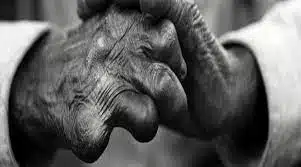Despite India being declared “Leprosy Eliminated” in 2005 , India still accounts for 25% of the world’s new leprosy patients, says Union Health Minister Mansukh Mandaviya in his written message of the National Strategic Plan and Road-map for 2024-2027. It is one of the oldest diseases known to man. National Leprosy Control Programme (NLCP) was launched by the government of India in 1954-55 with the vision of “Leprosy-free India”.
Leprosy :
It is a chronic bacterial infection which affects skin, nerves, lungs and eyes. Early detection of the infection can save the member from physical disabilities. There were sudden decline in the cases during the COVID-19. The root cause behind the decline was that the case detection dropped by 43% in 2020-2021 and by 34% in 2021-2022 in comparison to 2019-20.

The plan document notes that the Annual case detection rate has reduced to half. Arunachal Pradesh, West Bengal ,Odisha , Chhattisgarh, Gujarat , Mumbai and many more contribute to more than 90% cases in the country and have yet to receive its elimination target. In its most recent study, the NLEP acknowledged the presence of community-level cases and the fact that detection capacity is not commensurate with illness prevalence. The Indian Council for Medical Research’s sample survey uncovered a shocking number of instances that had previously been kept from view (ICMR).
The pace at which new cases are discovered has stayed nearly constant since 2005, and fourth, the rate at which new patients are disabled has been increasing due to a delay in diagnosis. Low voluntary reporting in the community owing to lack of knowledge as well as persisting fear, stigma, and prejudice towards leprosy was thought to be the primary reason of concealed cases. To raise awareness and combat prejudice and discrimination, SPARSH started the Leprosy Awareness Campaign (SLAC) on January 30th, 2017.
Table of Contents
Year of case Study :

Leprosy post exposure prophylaxis (LPEP) :
Many organisations and groups concerned with this problem issued a call for the implementation of LPEP. The overarching goal of the LPEP initiative is to assess the effectiveness of contact tracing and the administration of preventive treatment for leprosy under normal settings in numerous countries, and to then establish the effect this has on its incidence.
The program’s three main tenets are contact tracing and screening, as well as the delivery of single-dose rifampicin (SDR). Starting in 2016, the Mycobacterium Indicus Prani (MiP) vaccine has been made available in India via a project approach created by NLEP.
Immunotherapeutic and immunoprophylactic effects of MIP vaccination in multibacillary leprosy patients and their contacts have been shown in clinical studies conducted in hospitals and in the community.
Regrettably, there is no scientific or epidemiological foundation for the WHO eradication aim or any relevance for the eventual decrease or extinction of the remaining instances of it after it is accomplished.
This misinterpretation has led to a number of negative outcomes, including the elimination of skin smear services, the rapid integration of leprosy services into general medical health services, efforts to further shorten the length of therapy, and a decrease in research and funding for its programme as a whole.
For the program’s long-term health, it’s essential that they be reevaluated. Another crucial metric that is provided in raw figures is the prevalence of G2D among child leprosy patients. The 2016 WHO worldwide leprosy statistics reveal that data on child G2D cases was available from 210 countries, with 190 countries reporting no cases and 14 countries reporting 281, without include data from India. Among the 11,230 new paediatric cases identified in 2015–16, 162 (1.4%) were diagnosed with type 2 diabetes, according to data from the National Longitudinal Epidemiology Project (NLEP).













